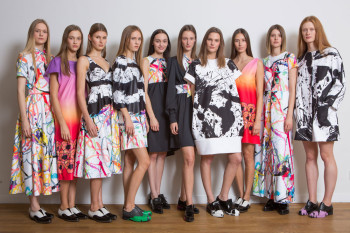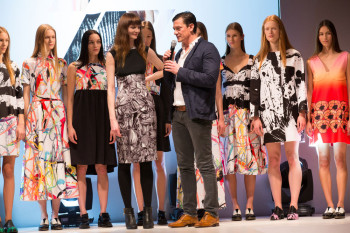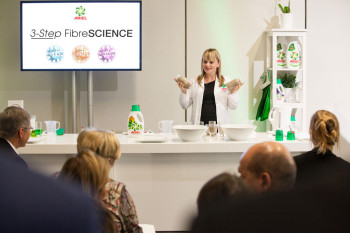It’s fitting that Procter & Gamble’s (P&G) new season of Future Fabrics fashion events opens in Berlin, Germany’s fashion capital and, arguably, the alternative or street-style fashion capital of the world. With 2014 marking the 25th anniversary of the fall of the Berlin wall, the city’s streets remain brimming with tourists and the air is heady with a sense of revolution.
 Fashion and revolution come together in a perfect, progressive union at Future Fabrics, as fashion experts and manufacturers from all over the world gather to discuss the future of fashion – new technology, new innovations in the way textiles are produced and clothing is designed, and to answer the million-buck question: what will we wear next?
Fashion and revolution come together in a perfect, progressive union at Future Fabrics, as fashion experts and manufacturers from all over the world gather to discuss the future of fashion – new technology, new innovations in the way textiles are produced and clothing is designed, and to answer the million-buck question: what will we wear next?
For P&G, a real coup is its association with UK designer Giles Deacon. As P&G’s Global Fashion Consultant, Giles collaborates with the brand, whose products include Ariel Washing Powder and Liquid, in pioneering new fabrics and designs, and educating us consumers on the best way to care for our fashion, so our clothes look new, for longer.
Speaking on behalf of the Giles Deacon design team, Mark Fitzgerald says, “Our plan is to grow consumers’ access to high-end fashion, like the Giles Deacon brand. Many designers put a ‘dry clean only’ disclaimer on their garments, simply because they themselves aren’t well-informed around fabric care.” With P&G, Giles Deacon’s team has created a cutting-edge collection, which could easily come straight off the runway and into our closets – no more costly or risky dry cleaning; we would be able to, for the first time ever, pop these high-fashion garments right into our washing machines.
The collection is a range of garments that play with the eye: stark contrast and bursts of vivid colour, textures, prints and interesting garment-shapes suggest a rise to the challenge – this is fashion for a new frontier, and an interesting blend of high-end- and home-care spaces.
With the future of fashion taking us interesting places as far as wearable tech is concerned, designers and clothing manufacturers will have to hear this call – and as consumers, who knows what we’ll be able to take home next?



